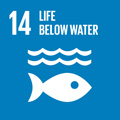- Docente: Nadia Pinardi
- Credits: 6
- SSD: GEO/12
- Language: English
- Teaching Mode: In-person learning (entirely or partially)
- Campus: Bologna
-
Corso:
Second cycle degree programme (LM) in
Science of Climate (cod. 5895)
Also valid for Second cycle degree programme (LM) in Physics of the Earth System (cod. 8626)
Second cycle degree programme (LM) in Physics (cod. 9245)
Learning outcomes
The student will deeping of knowdledge of ocean dynamics solving the classical problems of the wind driven ocean circulation for the world open ocean areas with attention to quasigeostrophic vorticity dynamics. The student will learn planetary gravity and Rossby wave motions in details as well as understanding of the overturning climatic circulation of the oceans.
Course contents
1. Structure of the ocean general circulation
2. The forcing of the ocean circulation: wind, heat and water fluxes at the air-sea interface
3. Primitive equations for the oceans
4. Reynolds theory of turbulence, parameterizations of turbulence in the ocean
5. Classical viscous solutions and ‘law of the wall’ for momentum stress at the air-sea interface
6. Boundary conditions for the ocean primitive equations
7. The planetary turbulent boundary layer: the Ekman currents at the surface and bottom of the water column
8. The Ekman transport and the Ekman vertical velocity
9. Large scale upwelling/downwelling processes
10. Vorticity conservation principles
11. Shallow water equations
12. Gravity wave solutions for the shallow water equations: inertial, Poincare’, Kelvin waves
13. Equatorial Kelvin waves
14. Non-dimensional quasigeostrophic analysis of the shallow water equations: Rossby waves
15. Rossby waves in a zonal current
16. Wind driven general circulation: Sverdrup, Stommel and Pedlosky solutions
17. El Nino theory and wave dynamics
18. Energy and enstrophy: oceanic vortices and quasigeostrophic turbulence
19. Global Ocean Overturning circulation
20. Deep and intermediate water convection in the ocean
21. Fundamentals of shear instability
Readings/Bibliography
Talley, L., D., G.L.Pickard, W.J. Emery and J.H. Swift, 2011. Descriptive Physical Oceanography: An Introduction. Academic Press, Elsevier, ISBN: 978-0-7506-4552-2
Cushman-Roisin, B., Introduction to Geophysical Fluid Dynamics, Academic Press
N.Pinardi,2022. Notes in Physical Oceanography
Teaching methods
All lectures and exercises are done in the classroom (all frontal lectures)
Assessment methods
The assessment will be carried out by an oral exam: the first topic will be chosen by the student, then the next two questions by the teacher. The exam normally will be 45 minutes long.
Teaching tools
The lectures are given at the blackboard and other material is distributed through the web site "Teaching material"
Links to further information
Office hours
See the website of Nadia Pinardi
SDGs


This teaching activity contributes to the achievement of the Sustainable Development Goals of the UN 2030 Agenda.
